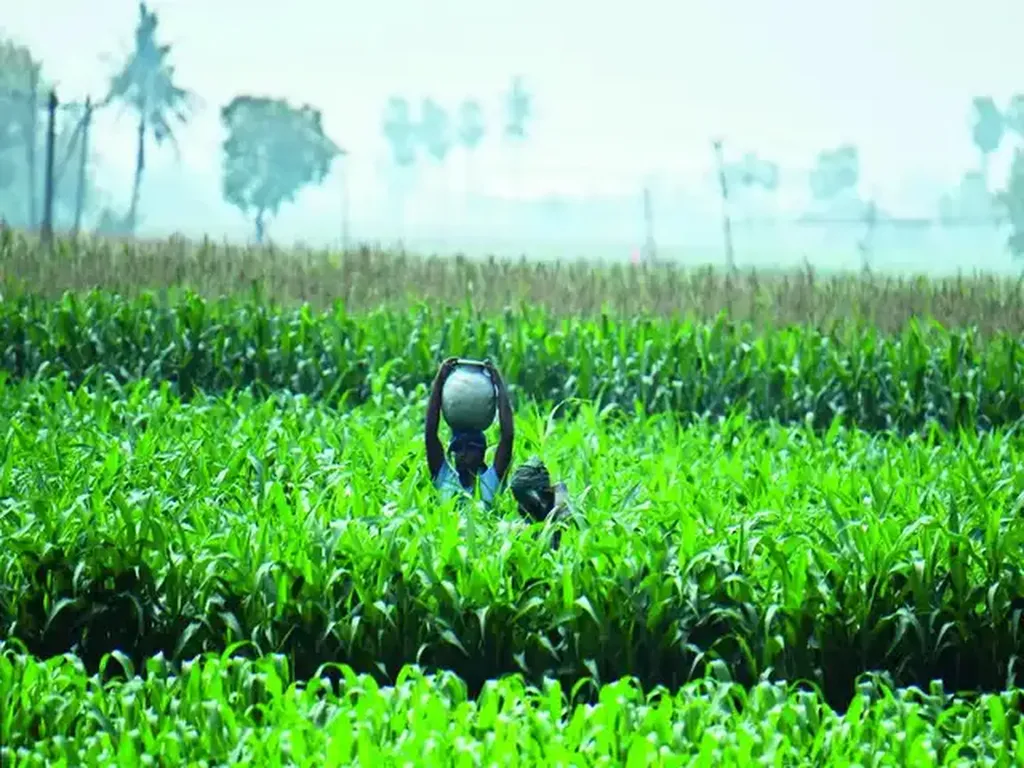In the heart of India, where agriculture is the backbone of the economy, researchers are delving into the genetic makeup of crops to unlock secrets that could boost yields and resilience. A recent study published in the ‘International Journal of Bio-Resource and Stress Management’ has shed light on the genetic diversity of green gram, a staple crop in many parts of the country. The lead author, Kanavi, M. S. P. from the Dept. of Genetics and Plant Breeding, University of Agricultural Sciences, Bengaluru, Karnataka, and colleagues have used simple sequence repeats (SSR) markers to explore the genetic diversity among 56 germplasm lines of green gram (Vigna radiata).
Green gram, a self-pollinated crop, is known for its nutritional value and adaptability to various environmental conditions. However, the extent of its genetic diversity has remained largely unexplored until now. The researchers employed fifteen standardized SSR primers to characterize the genetic diversity among the 56 green gram genotypes. All primers showed scorable polymorphism, indicating a rich genetic tapestry within the crop.
The genetic similarity between genotypes ranged from 0.35 to 1.00, with the lowest similarity observed between genotypes LGG-585 and LGG-573, and the highest between KKM-3 and TM-962. The average genetic similarity value of 0.85 suggests a moderate level of genetic diversity within the crop. This diversity is likely a result of the accumulation of novel gene combinations in response to natural selection pressures.
The researchers used the UPGMA (Unweighted Pair Group Method with Arithmetic Mean) method to construct a dendrogram based on the SSR results. This dendrogram divided the 56 green gram genotypes into eight main clusters. Cluster I was the most diverse, consisting of 15 genotypes, followed by cluster II with 9 genotypes, and cluster VI with 7 genotypes. The remaining clusters had fewer genotypes, indicating varying levels of genetic diversity.
The study’s findings have significant implications for the agriculture sector. Understanding the genetic diversity within green gram can help breeders develop new varieties that are more resilient to pests, diseases, and environmental stresses. This, in turn, can lead to higher yields and improved food security.
“The use of SSR markers in this study has provided a robust framework for determining genetic diversity and relationships among germplasm lines of green gram,” said Kanavi, M. S. P. “This information can be invaluable for breeders looking to develop new varieties that can withstand the challenges posed by climate change and other environmental factors.”
The study also highlights the potential of SSR markers in genetic diversity analysis. These markers are highly polymorphic and widely distributed throughout the genome, making them ideal for studying genetic diversity and relationships among crop varieties.
As the world grapples with the challenges of climate change and food security, studies like this one are crucial. They provide the genetic insights needed to develop crops that can thrive in increasingly challenging environments. The research conducted by Kanavi, M. S. P. and colleagues is a testament to the power of genetic diversity analysis in shaping the future of agriculture.

